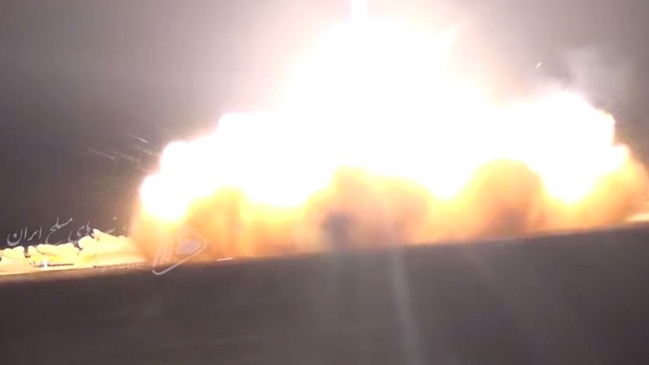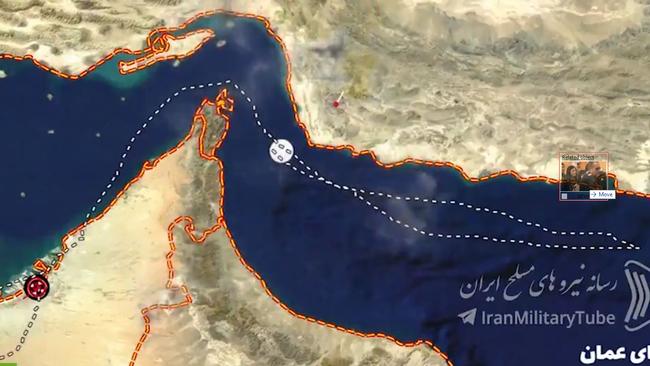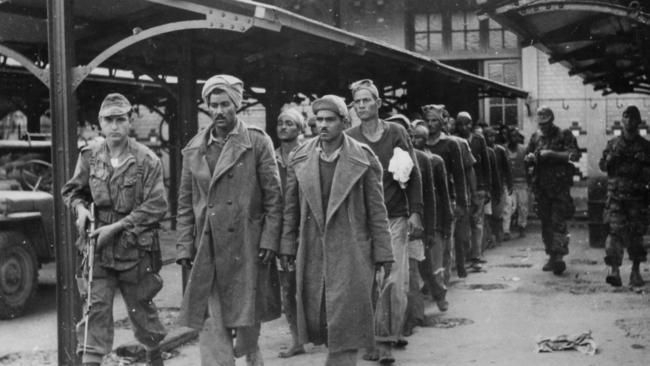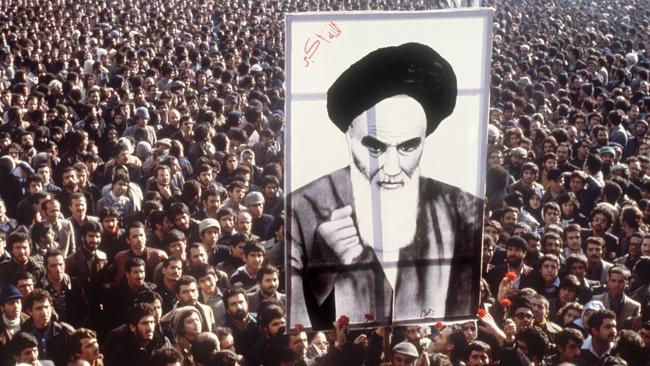How the Strait of Hormuz became the flashpoint for a looming global crisis
A tiny strip of sea is a flashpoint for a looming military crisis that could spark global chaos. But how did we get to this stage?
World
Don't miss out on the headlines from World. Followed categories will be added to My News.
As a steady stream of ships pass eastwards through the Strait of Hormuz they often carry goods to be used by people across the gulf nations and the wider Middle East.
But the real reason so many of them make their way through the narrow, snaking passage between the United Arab Emirates and Iran, is to load up on a far more lucrative cargo — a seemingly unending amount of oil.
After navigating back out of the winding passage, some of that liquid gold finds its way here, thousands of kilometres away in Australia, and to European nations — but the majority of it is headed to Asian nations such as China, Japan, India and South Korea.
John Blaxland, Professor of International Security and Intelligence Studies at the Australian National University, told news.com.au there may not be a trade route in the world that is as important as the Strait of Hormuz right now.
“It’s almost overwhelmingly about oil,” he said.
“It’s made up of two narrow channels, one for the westward and one for the eastwards traffic. But the problem is that they are not that hard to disrupt if you really want to.”
Because the strip of sea is so thin, it means that anyone wanting to cause chaos on the world’s oil markets can easily reach the ships passing though and escape back to land in almost no time at all.
And, given how reliant the global economy is on oil and the sheer volume of it flowing through the Strait of Hormuz every day, it’s perhaps no surprise that a series of attacks on tankers in the strip have led to a major escalation in tension in recent weeks.
Iran says it is “ready for war” with the USA after shooting down an American drone on Thursday and President Donald Trump has sent thousands of troops to the region as simmering tensions in the Middle East have deepened.
Prof Blaxland says tensions have spiralled so dramatically because there’s almost always a huge vested interest when somebody carries out an attack in the strait.
He says the attacks often act as a form of intimidation, as gulf nations to the south — backed by the US — and Iran to the north try to stamp their authority over the crucial route.
Analysts have suggested Iran’s alleged involvement in the oil tanker attacks in the Strait in May and earlier this month may be to show it can imperil the world’s oil markets, without leaving any evidence that could trigger American military retaliation.
And Iran has a lot to gain by manipulating the market, as crude oil prices shot up by more than three per cent after the June attacks and the Iranians export 2.6 million barrels of the stuff a day.
However, Prof Blaxland warned there is a danger that these attacks could do more harm to the perpetrator than good, especially if the entire route has to be blocked off because things get out of hand.


“It’s like sawing off the branch your sitting on and it’s potentially catastrophic,” he said. “There’s been talk of fully blocking the entire strait off for many years, but thankfully that has never happened.
“The problem is everybody knows that if you do that you are causing extraordinary harm, not just to your adversary, but also to yourself by blocking it.”
For this very reason, the US, backed by its allies, like Australia, has spent millions of dollars over many decades, stretching back to the 1950s, to ensure the region is secure — especially given the US was, for a long time, reliant on its oil.
This escalated to a full-on conflict, known as the Tanker War, between Iran and the US in the late 1980s.
The US and other nations entered the fringes of the conflict when the warring neighbours launched attacks on international oil tankers transiting the strategic waterway.
In 1987, the US Navy began to escort vessels, clear mines floating in the sea and patrol the shores in search of missiles, stoking a military response from Iran.
By August the following year, more than 200 boats were attacked and dozens of sailors killed in the conflict, including 37 Americans.
Over time, the US has become less dependent on oil coming out of the strait.
However, it is still dependent on the stable flow of oil for the maintenance of a stable global oil market, which the US can’t control alone which is why it has befriended allies like Saudi Arabia and other Gulf states over the years.

Professor Blaxland said this all began back in 1956, when British, French and Israeli forces invaded Egypt in a bid to take control of a another crucial trade route — the Suez Canal.
The invasion was initially successful, but the US refused to offer its support and the troops were forced to withdraw.
“It was a hugely embarrassing moment for Britain and France, and it was the turning point,” said Professor Blaxland. “After that point, the US played the most dominant role as the security guarantor of oil flow through Middle Eastern waters.”
Over the same period Iran has gone through monumental changes, most notably the overthrow of its western-backed autocrat leader in 1979 in the Iranian Revolution.

Later that year, 52 American diplomats and citizens were held hostage for 444 days inside the US Embassy in Tehran when it was stormed by revolutionaries.
This led to a botched rescue attempt by the Americans — which is still remembered as very painful period in US history.
In more recent times, Iranian troops played a prominent role in supporting militias that directly targeted American forces in the Middle East.
“There is a deep and longstanding resentment at Iran’s brutal and bloody actions directly targeting US forces in Iraq and elsewhere,” said Professor Blaxland. “So you can see why the US wants to give Iran a bloody nose.”
And, if tensions between the US and Iran continue to worsen to the point of military strikes, it is these US troops stationed in Iraq and Syria who could bear the brunt of an Iranian response.
Originally published as How the Strait of Hormuz became the flashpoint for a looming global crisis



